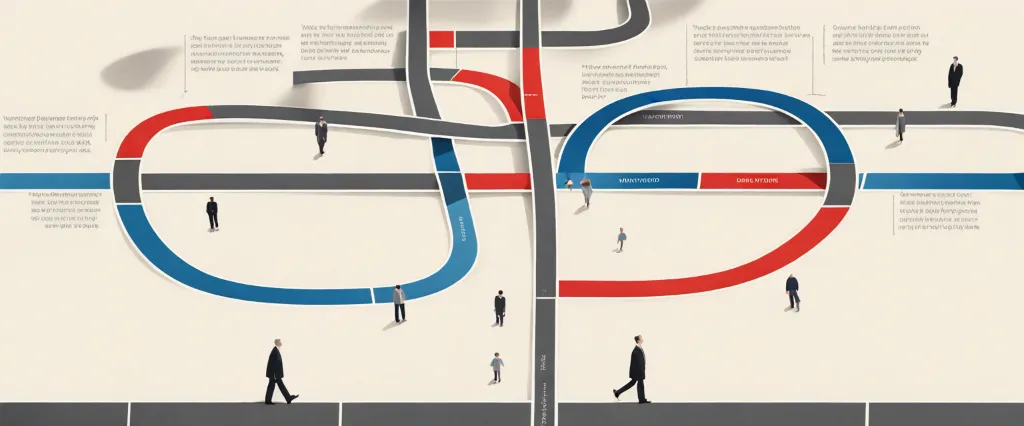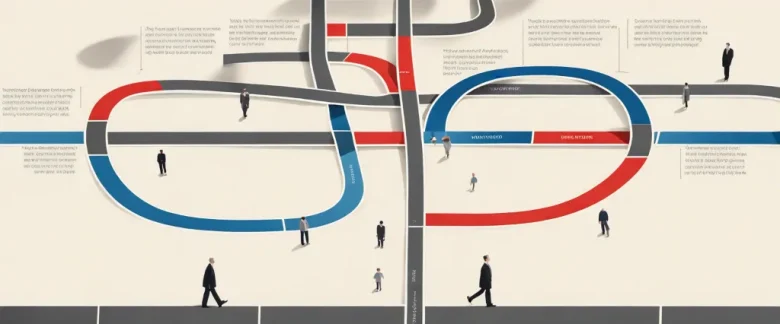
In his book “What You Do Is Who You Are,” renowned entrepreneur and venture capitalist, Ben Horowitz, explores the critical role of culture in shaping the identity and success of organizations. Horowitz draws upon captivating historical examples and personal experiences to shed light on the power of actions and choices in defining a company’s character. With his unique blend of practical advice and engaging storytelling, Horowitz provides readers with invaluable insights into building and maintaining a strong culture that aligns with their organization’s values and drives sustained growth and prosperity.
Chapter 1: The Importance of Culture
Chapter 1: The Importance of Culture in “What You Do Is Who You Are” by Ben Horowitz explores the crucial role culture plays within organizations. Horowitz emphasizes that a strong culture is necessary for success, and it must be deliberately built and nurtured by leaders.
The chapter begins with an anecdote about the Haitian Revolution led by Toussaint L’Ouverture. Horowitz draws a parallel between L’Ouverture’s ability to instill a strong set of values and beliefs within his followers, enabling them to triumph against all odds, and the importance of culture within a company. He argues that just as L’Ouverture’s culture of resilience and determination led to victory, a strong corporate culture can lead to similar outcomes in business.
Horowitz further explains that culture defines how companies operate and how employees treat each other, which ultimately shapes their success or failure. He discusses the importance of purposeful actions, explaining that leaders need to align their words with their behavior to establish an effective culture. Leaders must set clear expectations and hold themselves accountable to the same standards they set for their employees.
The author also addresses the challenge of culture transformation in troubled companies, using examples such as the cultural transformations of Haiti’s Bois Caïman Vodou ceremony and the rise and fall of the samurais in ancient Japan. He asserts that changing culture requires leaders to make significant and often uncomfortable choices, yet necessary to redefine values and norms within the organization.
Overall, Chapter 1 stresses the central role of culture in shaping organizational success. It emphasizes that leaders must actively work to define and foster a culture that aligns with their desired outcomes, treating culture as a strategic priority in order to cultivate a high-performing and resilient company.
Chapter 2: The Origins of Culture
Chapter 2: The Origins of Culture of the book “What You Do Is Who You Are” by Ben Horowitz delves into the importance of culture in shaping an organization and how leaders can establish and maintain effective cultures.
Horowitz begins by discussing the story of Toussaint Louverture, a former slave who led the successful revolution in Haiti against French colonial rule. He highlights how Louverture strategically changed the cultural norms to unify his diverse army and achieve their common goal. By creating a clear set of values, rituals, and behaviors, Louverture established a strong and cohesive culture among his troops, which ultimately led to their victory.
The author then emphasizes that leaders need to actively shape their organization’s culture, rather than leaving it to chance. He argues that culture is not simply a byproduct but a choice. Horowitz believes that leaders should intentionally design their culture by defining their core values and aligning them with their actions.
Horowitz introduces three key components to building a strong culture: 1) Creating slogans and statements that embody the desired values, 2) Establishing rituals that reinforce those values, and 3) Setting high standards and holding everyone accountable. He provides examples of successful companies like Netflix, which implemented a “freedom and responsibility” culture by establishing clear guidelines and values for their employees.
Furthermore, Horowitz emphasizes the significance of cultural fit and addresses the necessity of adapting the culture as the company grows and evolves. He warns against allowing a toxic culture to develop or persist within an organization and provides strategies for identifying and addressing cultural issues.
In summary, Chapter 2 of “What You Do Is Who You Are” explores the origins and importance of culture in an organization. It demonstrates how leaders can deliberately shape and maintain a strong culture by defining core values, implementing rituals, setting high standards, and ensuring cultural fit. Overall, the chapter emphasizes that culture is a crucial aspect of successful leadership and organizational development.
Chapter 3: Establishing Culture
Chapter 3: Establishing Culture of “What You Do Is Who You Are” by Ben Horowitz explores the crucial role of establishing a strong company culture and the necessary steps to achieve it. Horowitz emphasizes that culture is not what you say, but what you actually do.
The chapter begins with Horowitz sharing the story of Toussaint Louverture, a former slave who became a military and political leader in the Haitian Revolution. Louverture’s leadership and success were attributed to his strong, disciplined culture. Horowitz illustrates how leaders need to establish a culture with clear values and behaviors, and then consistently act upon those values to instill them into the organization.
He goes on to discuss the challenges faced when trying to establish culture, highlighting the example of Francis Ford Coppola’s creation of the cult classic movie “Apocalypse Now.” The struggles and chaos encountered during the production process helped shape its culture, which became defined by perseverance and adaptability.
Horowitz provides practical advice on how leaders can introduce culture effectively. He emphasizes the importance of leading by example and aligning actions with stated values. This involves demonstrating the desired behavior personally, as well as recognizing and rewarding those who embody the desired culture.
Furthermore, the chapter explores the significance of rituals in building culture. Horowitz highlights the custom of making decisions through consensus at the Haitian Revolution, and how this shaped their war culture. He explains how rituals can act as a powerful tool to reinforce shared values and behaviors in organizations.
To conclude, Chapter 3 of “What You Do Is Who You Are” underscores the importance of both leaders and employees living the company’s culture through their actions and decisions. Culture is not simply created through words or slogans but must be consistently practiced and reinforced. By understanding the stories, challenges, and rituals that define a culture, leaders can successfully establish a strong and enduring cultural foundation.
Chapter 4: Spreading Culture
Chapter 8: Culture Sustained
Chapter 8 of “What You Do Is Who You Are” by Ben Horowitz, titled “Culture Sustained,” delves into the importance of nurturing and maintaining a strong corporate culture within an organization. The chapter emphasizes the significance of continuity and consistency in culture, as often cultures may falter due to complacency or changes in leadership.
Horowitz begins the chapter by examining the strong and disciplined culture established by Genghis Khan, the founder of the Mongol Empire. Despite its brutal reputation, Genghis Khan’s empire thrived due to a robust hierarchy and a clear set of guidelines for behavior. This example illustrates how a culture can be sustained even through turbulent times.
The author then argues that defining and sustaining culture is crucial for long-term success, but it requires active effort. He provides real-life examples from companies like IBM and Safeway to illustrate how their strong cultures helped them weather crises and adapt to changing circumstances.
Horowitz emphasizes the need for leaders to actively propagate culture, rather than leaving it to chance. He advises leaders to hire, fire, and reward employees based on their adherence to the desired culture, as opposed to solely focusing on job performance. The author stresses that culture must be consistently reinforced to ensure its long-term durability.
Furthermore, the chapter explores the importance of rituals and symbols in sustaining culture. These are tangible and memorable elements that embody the values and principles of the organization. Rituals can range from unique office traditions to formal ceremonies, while symbols can include icons, mottos, or artifacts that encapsulate the organization’s cultural identity.
In summary, Chapter 8 of “What You Do Is Who You Are” emphasizes the significance of cultivating and nurturing a strong corporate culture within an organization. It stresses that culture must be actively sustained, with leaders taking deliberate actions to reinforce it, and highlights the role of rituals and symbols in preserving culture over time.
After Reading
In conclusion, Ben Horowitz’s book, “What You Do Is Who You Are,” provides readers with a profound exploration of culture and leadership in modern organizations. Horowitz’s in-depth analysis of historical leaders and unconventional practices offers valuable lessons on building strong company cultures that drive success. By emphasizing the importance of aligning actions with core values, the book challenges readers to think critically about their own leadership styles and consider the impact they have on their organizations. Through compelling anecdotes and practical insights, Horowitz highlights the significance of culture and reframes the traditional understanding of leadership, making this book a must-read for anyone seeking to cultivate a thriving and impactful company culture.



